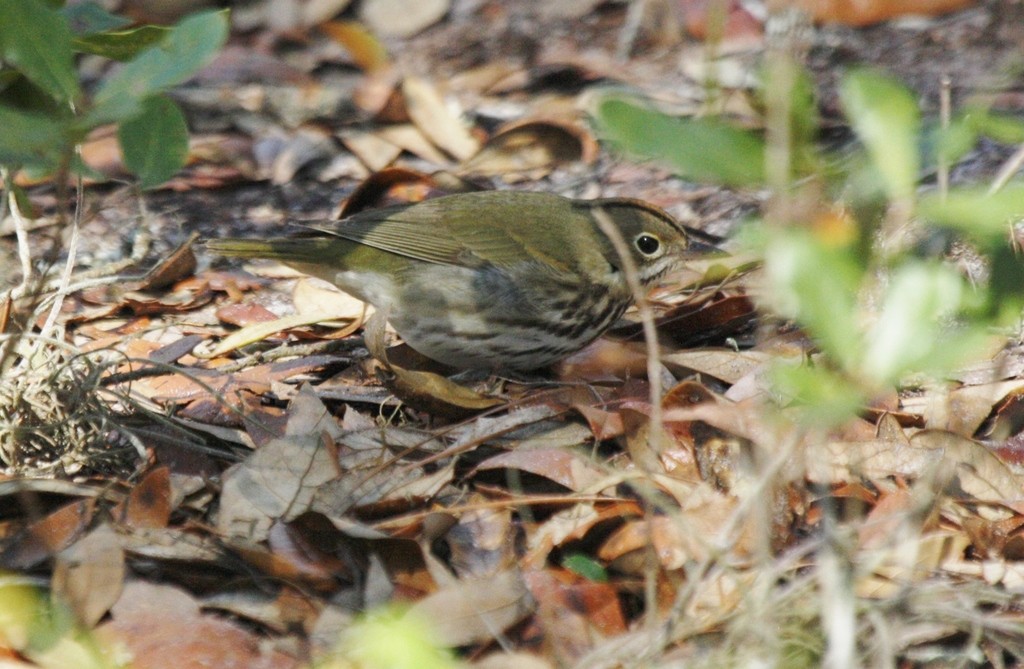Ovenbird
A species of Ovenbird Scientific name : Seiurus aurocapilla Genus : Ovenbird
Ovenbird, A species of Ovenbird
Botanical name: Seiurus aurocapilla
Genus: Ovenbird
Content
Description People often ask General Info
 Photo By silversea_starsong , used under CC-BY-NC-4.0 /Cropped and compressed from original
Photo By silversea_starsong , used under CC-BY-NC-4.0 /Cropped and compressed from original Description
Ovenbirds are large wood warblers and may sometimes be confused by the untrained for a thrush. Adults measure 11–16 cm (4.3–6.3 in) long and span 19–26 cm (7.5–10.2 in) across the wings. They weigh 19 g (0.67 oz) on average, with a range of 14–28.8 g (0.49–1.02 oz). Among standard measurements, the wing chord is 6.8 to 8.3 cm (2.7 to 3.3 in), the tail is 5 to 5.8 cm (2.0 to 2.3 in), the bill is 1.1 to 1.3 cm (0.43 to 0.51 in) and the tarsus is 2 to 2.3 cm (0.79 to 0.91 in). They tend to be heavier in winter and particularly at the start of their migration. They have olive-brown upperparts and white underparts heavily streaked with black; the flanks have an olive hue. A white ring surrounds the eyes, and a black stripe runs below the cheek. They have a line of orange feathers with olive-green tips running along the top of their head, bordered on each side with blackish-brown. The orange feathers can be erected to form a small crest. The eyes and the upper part of the thin pointed beak are dark, while the lower beak is horn-colored and the legs and feet are pinkish. Males and females look alike. Immature birds have tawny fringes to the tertiary remiges and sometimes buff-tipped outer primary wing coverts. Most conspicuously, the olive-green tips of the crown feathers, which are hardly visible in adult birds, are far larger in extent in immatures and cover the orange crown-stripe almost or completely. The main song of the ovenbird is a series of strident, relatively low-pitched, bisyallabic motives repeated without pause about eight times and increasing in volume. Usually, the second syllable in each motive is sharply accented: "chur-tee’ chur-tee’ chur-tee’ chur-tee’ chur-TEE chur-TEE chur-TEE!" Male ovenbirds utter a sweet chattering song in the air at twilight, after the manner of the skylark, incorporating portions of the main song into a jumble of sputtering notes and mimicry as they dive back to earth. The call is a variably pitched, sharp "chik!" Some variations recall the common call note of a downy woodpecker. If the bird is excited, it may repeat this call several times. The fight call is a high, rising siiii. 
Size
15 cm (6 in)
Life Expectancy
9 years
Nest Placement
Ground
Clutch Size
3 - 6 eggs
Incubation Period
1 - 2 broods
Number of Broods
11 - 14 days
Nestling Period
7 - 10 days
Feeding Habits
Ovenbird's diet primarily consists of forest insects and invertebrates, including beetles, ants, caterpillars, flies, and larvae, foraged from leaf litter, leaves, bark, or caught in mid-air. Nestlings are fed ground beetles and larvae. Adaptable, ovenbird may feed on tree-dwelling insects like budworms and incorporate seeds or specialize in abundant local prey, such as ants in winter, sometimes hunting in grasslands or near water.
Habitat
Ovenbird favors mature, extensive broadleaf or mixed forests with a high canopy and suppressed underbrush across North America. These birds thrive in uninterrupted forest patches that offer extensive leaf litter, crucial for their invertebrate diet. While non-migratory populations require large tracts of such forestland, ovenbird displays adaptability in winter, utilizing varied habitats from mangroves and shade coffee plantations to dry scrublands. However, ovenbird consistently avoids open fields and prefers to forage in areas with abundant leaf debris.
Nest Behavior
The female ovenbird meticulously builds the nest over 5 days, choosing a site with leaf litter on the ground, often downhill from slopes. She lays eggs inside this well-hidden nest and, together with her mate, provides parental care for the eggs and young.
Nest Characteristics
Ovenbird's nest is a domed structure with a side entrance, constructed of dead leaves, grasses, stems, bark, and hair, measuring up to 9 inches across and 5 inches high, with an inner cup of 3 inches across and 2 inches deep. It is camouflaged with leaves and sticks and built on the forest floor under canopy breaks.
Dite type
Insectivorous
People often ask
General Info
Feeding Habits
Bird food type
Bird Feeder Type

Ground

Platform
Sounds
Call
Recording location: Mexico
Song
Recording location: United States
Behavior
Ovenbird's are characterized by their energetic behavior, particularly during the breeding season when males establish and defend territories through loud vocalizations and chases. Daily, ovenbird's forage methodically on the forest floor, flicking through leaf litter for invertebrates. Distinctly, when nest threats occur, parents may use distraction techniques such as feigning injury to lead predators away. Post-fledging, parents divide care for the young, with the male staying in-territory and the female moving adjacent. Interactions amongst immature ovenbird's are playful and social, and they migrate after adults, with winter solitude marking a behavioral shift.
Species Status
Not globally threatened.
Scientific Classification
Phylum
Chordates Class
Birds Order
Perching birds Family
New world warblers Genus
Ovenbird Species
Ovenbird